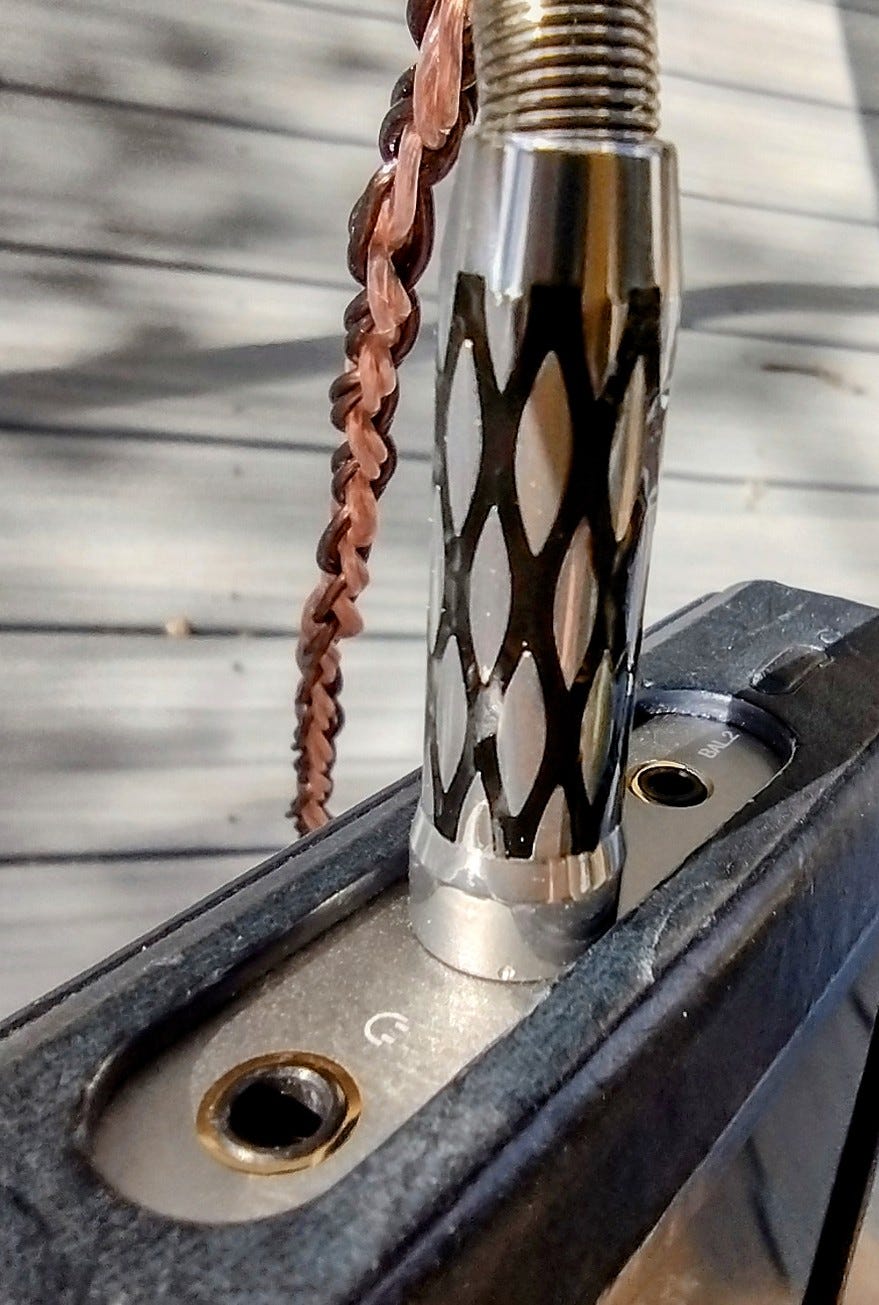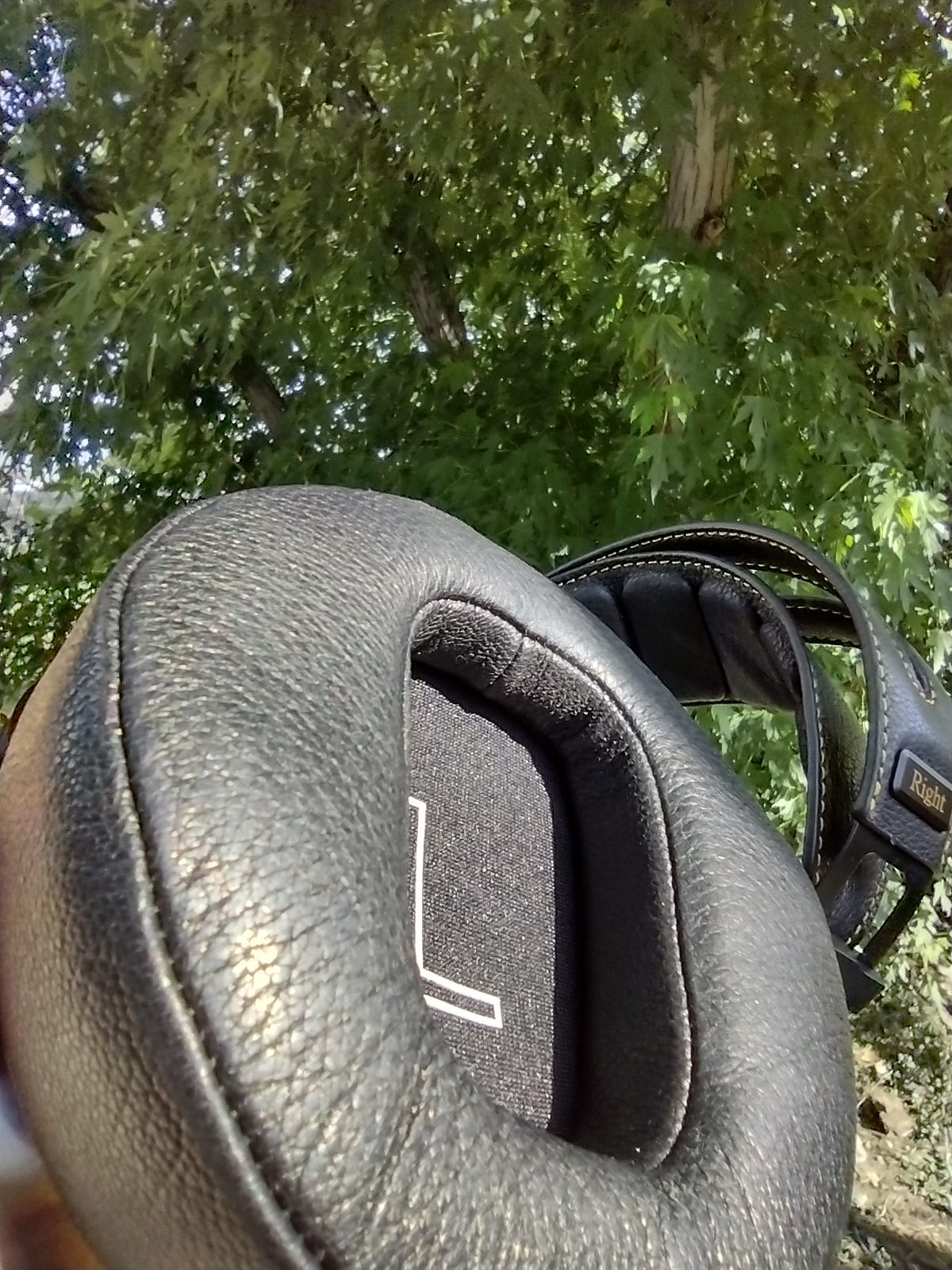Review: Sendy's Peacocks—Open-back, Over-ear, Planar Flagship Headphones
Beautiful in appearance, beautiful in sound
The first things to note about the Sendy Peacocks are their thoroughly beautiful appearance and the luxurious, pillow-like comfort when wearing them. First things to notice—not most important. Always, the sound counts for four of anything else, or whatever your counting for it is. But first, more pre-listening impressions. These are my first planar-driver headphones, and I am impressed. The 80-mm drivers are enormous, and so, so are the headphones. It would have been one thing to have turned out another pair of military-looking metal headphones in a black and gray color scheme. What Sendy chose to do is quite another. The all-natural materials (no plastic visible except for a part of the connection of cup to strap—but some brightly colored rubber that begs we ask Why?)—literal gold, black and gold filigreed metal, finished wood with noticeable grain, goatskin-leather ear pads, twisted black-and-gold cables ending in a solid-steel, ornamentally carved 4.4-mm balanced stereo plug in gold plating. These are stunners. For the best effect, take them outside on a sunny day.
Would these be lookers but be weak on musical sound? As the first pair of headphones made by Sendy that I would have tried, what would they be like? Are they no more than jewelry? I once aspired to be a maker of digital jewelry like that I read of in a computer science paper. These are strong on musical sound. They are more than jewelry, they are acoustic jewelry. They are a portable personal retreat to the world of music, in a world of scrolling screens and tires speeding on asphalt. A good part of wearing a headphone set is the wearing of it, and so I’ve devoted a good bit of space to the feel of these. They are weighty, soft, luscious. Today, walking my dog shortly before sunset, a perfect stranger and I exchanged hellos as he walked his dog…and he said something no one has ever said to me when I’ve been walking. He said, “Nice headphones.”
I have read a criticism of the Sendy Peacock headphones that I want to address right away. The reviewer writes that their treble “lacks extension.” I think this is misleading, since, comparison with the Sennheiser HD660s shows the Peacock treble is more delicate, nuanced and extended than that of the HD660s. Perhaps compared with other headphones at the Peacocks’ price point, the Peacocks’ treble might be thought to lack extension; but the numbers given for that by Sendy do not agree, with the -3-dB response curve extending to 40 kHz. My listening shows much higher frequency sizzle in cymbals, in the same recording, for the Peacocks than for the HD660s. And the HD660s are good sounding headphones.
One notable thing about the Peacocks in comparison with Sennheiser 600-series headphones is the much lighter clasping force on the Peacocks. The Sennheisers grab onto my head; “clasp” is appropriate. The Peacocks balance on top of it. It takes a minute or so for the soft, smooth, goatskin-leather earpads, to form a seal of sorts (totally unlike a suction cup!) as the headphones adjust to fit my head more perfectly. What might seem at first like loosely fitting ear cups turn out to be effective at providing a closed space around the ear, for proper transfer of sound. And they are even more comfortable than my Focal Clear MGs, which amazed me upon first wearing them. I feel a notable difference when I take off my eyeglasses while wearing the Peacocks. The fit is a bit better in the front, without my glasses. That may be true, generally, about glasses, but I found it especially noticeable with the Sendy Peacocks, at first. Now I don’t notice it.
The bass in the Peacocks has been described as being more powerful and substantial than it seemed to me at first. Until the phones conform to my head, the bass is lost and is weak. Once they are on properly, the bass has a deep low end, though the frequency response range given only says they extend to 20 Hz, and I am left to assume that is the -3-dB point. Little is given in terms of specifications, as far as I have been able to find. The lows in, say, Caterina Barbieri’s electronic timbral exploration, “The Gravity that Binds,” and tracks with similarly strong low-end power in them, such as newer jazz recordings with rich acoustic bass, and even a Bill Evans recording with Eddie Gomez’s Ron Carter-like low string pedal tones and long legato slides, are reproduced very well and, while not overwhelming as some may prefer, make the definite point that the low-end components are present and powerful. The electronic jazz with acoustic saxophone, 3TM’s Lake album, on the track “Suburban Portraits,” has just such sub-bass components. Some headphones only hint at such bass, but the Peacocks present it as on a teak serving tray. It is almost always a surprise to me when a pair of headphones sneaks in a note so low, I had forgotten I could hear that kind of sound.
Then there is the wide sound stage of the Peacocks. This will depend upon the recording to some degree, but I have heard the same source through different headphones, in one listening session, and some headphones present it in strikingly different ways. Instruments are imaged as being separate from each other, with physical space between them. The airy space in which the music occurs, with the Sendy Peacocks, is a large step above the Sennheiser HD6XX’s, or the HD660s’s. The sounds are more refined, there is a broader tonal and timbral range, and the highs and lows are gentler without seeming weak. The sounds are more subtly rendered, more clearly distinct, with the Peacocks than with the Sennheisers. And I love my Sennheisers.
I find myself using the Peacocks as frequently as I can. They are the most comfortable, cozy headphones I have. They feel like jewelry. And they sound wonderful. They have balanced wiring from the earphones, and require adapters to convert to single-ended 3.5 mm and ¼”. The adapter to ¼” is like another piece of jewelry, with fish scale patterns cut into the metal. The build quality of the adapters (there’s one for XLR as well) is as good as it is with the phones. Being able to connect to a single-ended source using the sculpted-steel adapter is nice, since my tabletop headphone amp is single-ended.
One reviewer commented that these headphones are not going to the gym with anyone. I agree with that, but listen to this. Last evening, I took my dog for a walk, averaging just under 3.5 mph (5.6 km/h). I walked on paved trails and grass. It was my first time wearing the Peacocks on a walk, and they did well. Any kind of intense activity will lead to lots of sweat, which could damage the goatskin-leather ear pads, but brisk walking works out. My head felt as if it were being held between soft, fluffy pillows, and I felt as if I were in the lap of luxury, as if the Peacocks were the resplendent jewelry they are, with gold that glints in the lowering sun. So, they’re suitable for light-to-moderate physical activity like brisk walking, but running in them would not be wise. It would be a shame to have them come off my head and crash onto a concrete walking and cycling path. There’s one thing you can be confident of while wearing them out: you’ll be the only one with a pair.
Was it Nietzsche who wrote that all great thoughts are conceived while walking? He was quite the hiker, anyway. I wonder if a person could write a dissertation on Nietzsche wearing headphones while hiking the mountains around Sils Maria, Switzerland (https://en.m.wikipedia.org/wiki/Nietzsche-Haus,_Sils_Maria). These headphones, while they can be worn outside the home, are more suitable for pacing the kitchen floor in. My only doubt about the aesthetics of these phones is the color choice for the rubber collars through which the cables leave the connectors to the receptacles: bright red and blue rubber seem of doubtful taste in the context of the rest of the Peacock aesthetic of wood and gold.
They sound great. The Brad Mehldau Trio’s Village Vanguard recordings, another of which I’m listening to now, allow demonstration of musicality in the bass region. These are not boom truck-bass headphones. The separation of instruments is glass-clear with this recording. And again on this substack, I’ll point out that what may at first seem like limitations in a pair of speakers or headphones may be limitations in the source. The Village Vanguard recordings provide great source material for testing these headphones (or any headphones). Both the (for lack of a better term) woody, higher-pitched sounds in a pizzicato acoustic bass and the rich, lower tones, are reproduced by the Peacocks with aplomb during the bass solos. We have piano on the left, bass in the center, and drum set to the right. The steel brush-played drums sound so near and clear it is as if I am standing beside the drum throne. Audience applause comes from all around me. It is an immersive sound close to having a seat at a table in the room. I’m thinking now of a comedian I saw in Denver, and the sound of that. Substitute the comedian with the Brad Mehldau Trio, and not only do the tickets become harder to get, but that’s also the sound of these headphones when playing one of these albums recorded at the Vanguard. It’s the sound of being there.
More now, about the sound. I’m hearing even the slightest touch on a drum membrane, the ringing, clear tone of a tuned drum played so lightly it were as though it might have been a mistake, had it not been so musical. The treble tones of the cymbals are sizzling and delicate. The acoustic piano is heard in every last whisper of sustain. Notes are heard separately, with no mashing of them into one sound called “piano.” it helps that the playing is so skillfully done, to keep left- and right-hand lines sounding like two players. There is also no over-emphasis on the low frequencies in low notes on the piano. The lows are even felt, though not felt too strongly so as to seem artificially boosted. When I turn up the volume on Kevin Eubanks’ take on “My One and Only Love,” on his East West Time Line, there is so much sweet bass I think it is the track that has best highlighted the low end these headphones possess. And then there’s always Eubanks with bassist Dave Holland and percussionist Obed Calvaire, on Another Land, if low end sound is what you like. It is also my favorite playing by Eubanks.
It is a testament to the quality of sound and comfort in these Peacocks, that I want to do nothing but pace the kitchen floor while listening to a piano solo. And now that the trio is back in swing, I have to stop, lean against the counter, and take in all three artists’ contributions to the music. I have heard said that the mark of good gear is that you just want to keep listening with it. That’s the case with the Sendys. When these Peacocks strut their stuff, I don’t want to miss a note.









